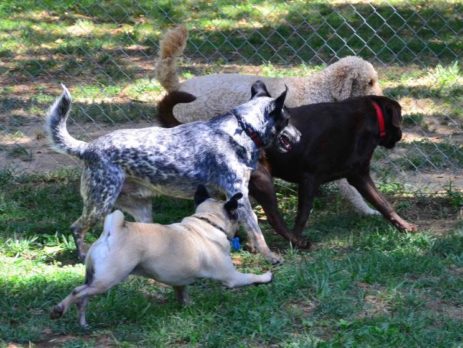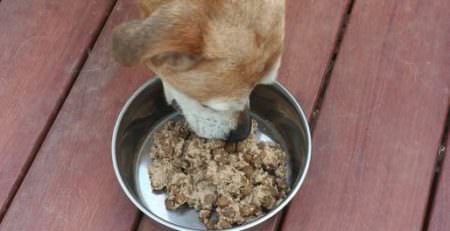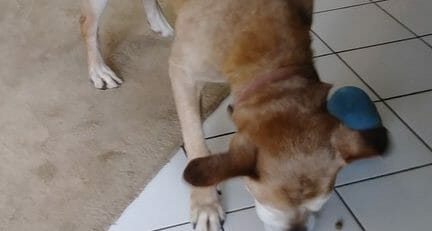Canine Intestinal Worms: How to Treat Them
Canine Intestinal Worms
There are four primary types of canine intestinal worms that can infect your dog. They are Hookworms, Roundworms, Tapeworms, and Whipworms.
Hookworms
Hookworms attach themselves to the wall of the intestine and feed on the dog’s blood. Adult worms lay eggs that are passed with the dog’s feces. In 1-3 weeks the eggs hatch and the larvae are released. Dogs can be infected by ingesting the larvae from contaminated soil or water, eating infected wildlife, through the skin, from nursing, or by being passed from a pregnant bitch to her puppies.
Infected dogs may show signs of anemia (pale gums, weakness), black, tarry stools, dull dry hair, and weight loss.
Monthly heartworm preventatives (Interceptor, Sentinel, Heartgard Plus, Iverhart Plus) are effective at controlling hookworms. Treatments include Drontal Plus, Panacur, and SafeGuard.
Roundworms
The adult roundworm is about 3 – 4 inches long and look like spaghetti. The adult lays eggs that are passed with the infected animal’s feces (dog, fox, cat, mice and other small rodents) where they become infective after 3 – 6 days. An infected animal can pass millions of eggs in its feces each day.
The eggs of roundworms are resistant to environmental conditions and can remain in the soil for months to years.
Infected dogs may show signs of weight loss, dull coats, a pot belly, anemia, vomiting, diarrhea, constipation, or cough. Puppies can be infected from mom before they are born or from nursing. Dogs and puppies can become infected from eating contaminated soil or water or eating infected wildlife.
Monthly heartworm preventions (Heartgard Plus, Iverhart Plus, interceptor, Sentinel) are effective at preventing roundworms. Treatments include Drontal Plus, Panacur, SafeGuard, and others. When treating for roundworms it is important to retreat the dog after 2 – 4 weeks to kill the larvae that have migrated back to the intestine. It is also advisable to have a fecal examination on your puppy about 1-2 months after its last treatment to detect any new adult worms.
Tapeworms
The tapeworm is flat and consists of a head and many segments with their own reproductive organs. New segments are formed and mature segments are cast off. The dried segments look like grains of rice and dried or moving segments may pass with the dog’s feces while some may be seen on the dog’s anus area or on the fur.
An infected dog may scoot on the floor or lick the anal area. Other signs may include abdominal discomfort, nervousness, vomiting, or in heavy infestations, convulsions.
A dog becomes infected from ingesting fleas infected from eating the tapeworm’s eggs in the environment. Treating the dog’s yard for fleas as well as treating the dog is recommended.
Treatments include Drontal Plus, Panacur, SafeGuard, Droncit, and D-worm.
Whipworms
Whipworms get their name from the whip like shape of the adult worms. Whipworm eggs are somewhat susceptible to drying but can remain alive in moist soil for years and are resistant to freezing. There is no effective method for killing whipworm eggs in the soil. Pick up feces daily to prevent exposure.
A dog can be infected by ingesting food or water contaminated with whipworm eggs. When the eggs are swallowed it takes 3 months for the larvae to mature into adults and burrow into the intestinal wall. Adults lay eggs that pass with the dog’s feces and must remain in the soil for about a month to mature and be capable of causing infection.
Dogs infected with large amounts of whipworms may show signs of anemia, diarrhea, weight loss, and frequent licking of the flank area where inflammation may occur due to the worms penetrating through the intestinal wall.
Monthly heartworm treatments (Interceptor and Sentinel) are effective at controlling whipworms. Treatments include Drontal Plus, Panacur, and SafeGuard.
It is advisable to have a fecal examination on a regular basis. Canine intestinal worms such as Tapeworm segments can be seen on the dog’s anus and hair and in the feces but other worms often go undetected until a heavy infestation has occurred.



